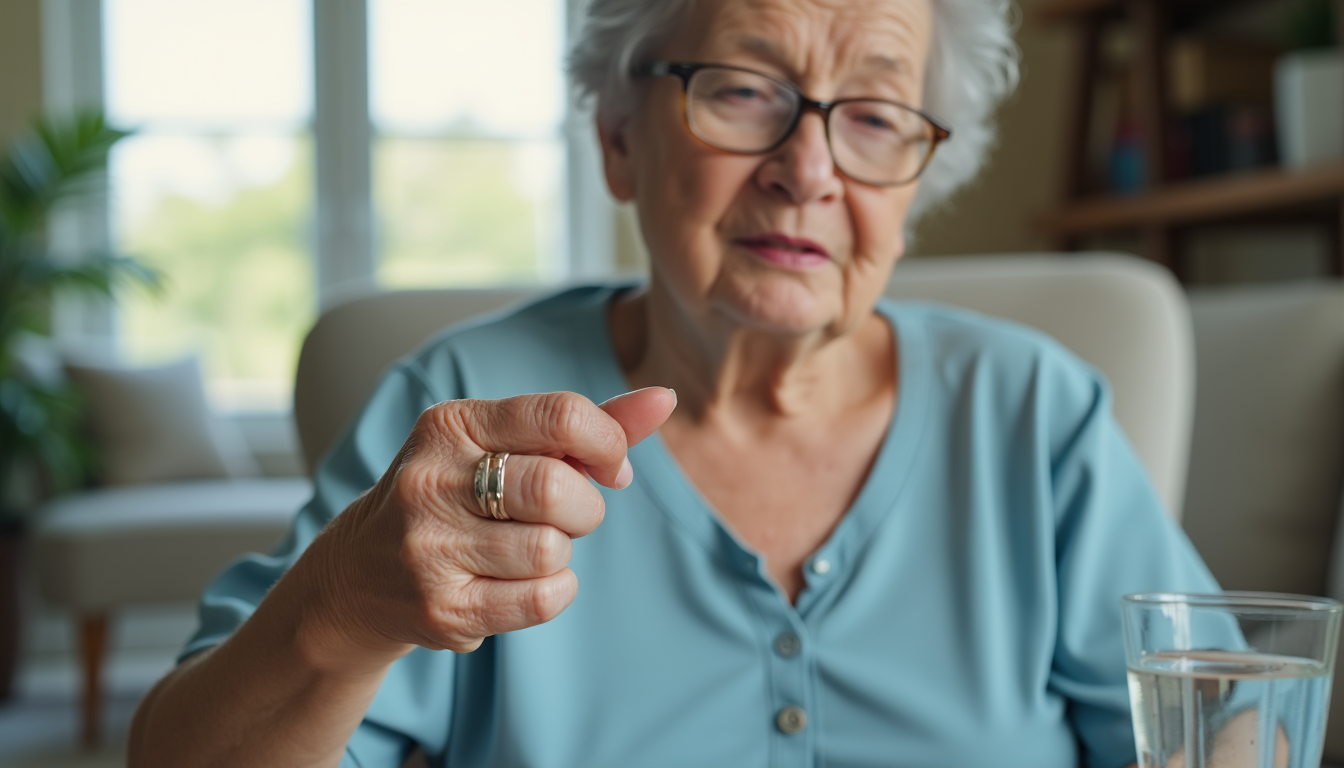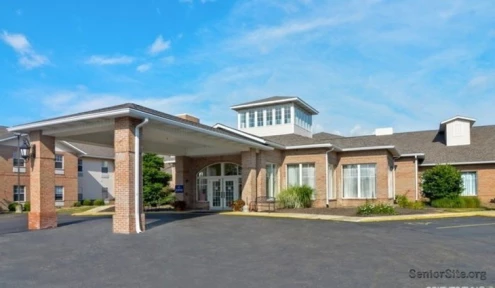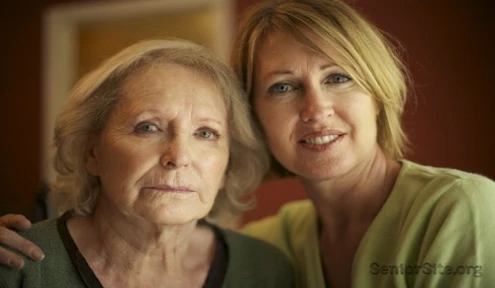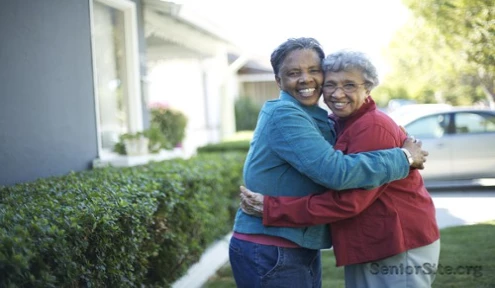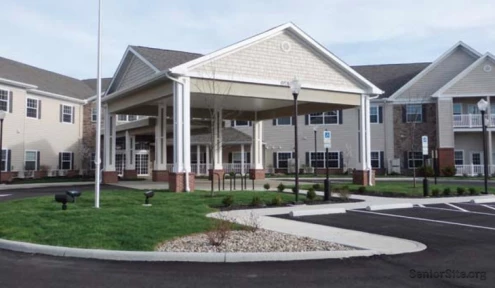Did you know that recognizing symptoms of dehydration in elderly individuals could be lifesaving? With 17-28% of older adults in the United States chronically dehydrated, this condition has become a frequent cause of hospital admissions. Our senior loved ones are particularly vulnerable to this silent threat.
Unfortunately, the signs and symptoms of dehydration in elderly people can be easy to miss. Seniors experience diminished thirst signals, often not realizing they need water until they’re already dehydrated. In fact, the aging process naturally decreases body water percentage, making elderly dehydration symptoms more dangerous. What are symptoms of dehydration in elderly that we should watch for? They range from dark urine and fatigue to confusion and dizziness—with severe cases potentially leading to seizures, kidney problems, and even heat strokes.
We lose between 8-12 cups of water daily through basic bodily functions like breathing and sweating. Therefore, maintaining proper hydration is essential, especially for seniors who should be drinking 9-12 cups of water daily depending on gender. Throughout this article, we’ll explore the warning signs of dehydration in elderly individuals and what healthcare professionals want you to know about prevention and treatment.
Early Signs of Dehydration in Elderly
The earliest indicators of fluid deficiency often go unrecognized in older individuals, making proactive monitoring crucial. Catching symptoms of dehydration in elderly people early can prevent progression to more serious conditions.
Dry mouth and increased thirst
Thirst is typically the body’s first alarm system for dehydration. However, as we age, this vital warning mechanism becomes less reliable. Many seniors experience a significantly diminished thirst response, particularly after age 80. This decline means older adults often don’t feel thirsty until they’re already in a dehydrated state.
Look for these telling signs:
- Dry, sticky mouth and decreased saliva production
- Cracked lips that appear parched
- Difficulty swallowing due to reduced saliva
- Feeling of “unquenchable thirst” when symptoms progress
What makes this particularly concerning is that many seniors and caregivers mistakenly attribute these symptoms to normal aging rather than recognizing them as signs of dehydration in elderly individuals.
Changes in urine color and frequency
Urine characteristics provide reliable indicators of hydration status. In properly hydrated individuals, urine should appear pale yellow. When dehydration sets in, the kidneys work to conserve fluid, resulting in:
- Darker urine (amber or honey-colored) indicating concentrated waste products
- Reduced urination frequency – going less than four times daily suggests fluid conservation
- Decreased volume of urine with each void
“Clear urine signifies that a person is well hydrated, while darker urine usually signifies dehydration,” notes medical experts. Additionally, the smell of urine may become stronger as it becomes more concentrated.
Monitoring these early signs is particularly important since older adults naturally have lower body fluid reserves to begin with. The amount of fluid in our bodies decreases with age, meaning less water is available when dehydration begins. This makes elderly individuals more vulnerable to rapid progression from mild to moderate dehydration if these initial symptoms go unaddressed.
Worsening Symptoms That Shouldn’t Be Ignored
As dehydration progresses beyond the initial signs, more concerning symptoms emerge that require prompt attention. These middle-stage warning signs often represent the body’s escalating distress signals that fluid levels are falling to dangerous levels.
Muscle cramps and fatigue
When elderly individuals become moderately dehydrated, muscle function becomes noticeably compromised. This happens because proper muscle operation depends on adequate fluid and electrolyte balance. Without sufficient water:
- Muscles develop painful cramps, particularly in the legs and abdomen
- Overall strength decreases substantially
- Even simple activities become exhausting
- Recovery from physical exertion takes longer
I’ve observed that many seniors mistakenly attribute these symptoms to aging or medication side effects, consequently overlooking critical signs of dehydration in elderly family members.
Dizziness and lightheadedness
As fluid levels drop, blood volume decreases, making it harder for the body to maintain proper blood pressure. This can manifest as:
- Sudden dizziness when standing up (orthostatic hypotension)
- Persistent lightheadedness throughout the day
- Unsteady gait or difficulty walking
- Increased fall risk – a major concern for older adults
These symptoms are particularly dangerous because they significantly increase the chance of falls, which can lead to serious injuries in elderly individuals.
Mood changes and irritability
The brain is extraordinarily sensitive to hydration status. Even moderate dehydration affects cognitive function and emotional regulation. Look for these telling behavioral changes:
- Unusual irritability or agitation
- Increased confusion about familiar tasks
- Difficulty concentrating or focusing
- Noticeable mood swings or personality changes
Given that dehydration is often mistaken for dementia in elderly people, recognizing these mood alterations as potential dehydration symptoms is crucial. Moreover, certain medications common among seniors, such as diuretics or laxatives, can accelerate fluid loss, worsening these symptoms.
Recognizing these warning signs early allows for intervention before dehydration reaches a critical stage requiring medical attention.
Severe Dehydration Symptoms That Require Medical Help
When dehydration reaches severe levels in elderly individuals, it becomes a medical emergency requiring immediate professional attention. Recognizing these critical symptoms of dehydration in elderly patients can literally save lives.
Confusion or disorientation
Severe dehydration dramatically affects brain function, causing:
- Sudden and serious changes in cognition that can mimic dementia
- Marked disorientation about time, place, or person
- Irritability progressing to extreme lethargy
- Slurred speech or difficulty communicating
Furthermore, these cognitive symptoms often worsen rapidly without intervention. Dehydration is actually a common cause of delirium in seniors, which appears suddenly unlike the gradual progression of dementia. Family members should note that any unexpected confusion in an elderly person warrants immediate medical evaluation.
Rapid heartbeat and low blood pressure
As the body loses significant fluid, blood volume decreases substantially, triggering cardiovascular distress:
When dehydrated, blood cannot circulate efficiently, leading to a drop in blood pressure. The heart compensates by beating faster, creating a dangerous combination. This can manifest as:
- Heart palpitations or noticeably rapid pulse
- Dizziness that worsens when standing
- Weakness or inability to walk normally
This combination of low blood pressure and elevated heart rate indicates hypovolemic shock, one of the most serious and potentially life-threatening complications of dehydration.
Inability to urinate or sunken eyes
Physical changes become prominently visible during severe dehydration:
Sunken eyes occur as fluid depletes from tissue around the eye sockets, giving a hollow appearance. This symptom is particularly noticeable in elderly individuals. Alongside this, kidney function becomes severely compromised, resulting in:
- Minimal or no urination for extended periods
- Extreme dry mouth and cracked lips
- Pale or blue-tinged skin
Ultimately, anyone experiencing these severe symptoms should receive emergency medical care immediately. Treatment typically involves intravenous fluids and electrolytes to quickly restore proper hydration levels and prevent organ damage.
How to Monitor and Respond to Dehydration at Home
For families caring for elderly loved ones, simple at-home monitoring techniques can help identify dehydration early before it becomes dangerous. These practical methods allow caregivers to take appropriate action based on observed symptoms.
Using the skin pinch test
The skin pinch test provides a quick, non-invasive way to check hydration levels at home. This technique measures skin elasticity, which diminishes when the body lacks adequate fluids:
- Gently pinch the skin on the back of the hand, arm, or abdomen
- Hold for a few seconds, then release
- Watch how quickly the skin returns to normal
In well-hydrated individuals, the skin springs back immediately. Alternatively, if the skin remains “tented” or takes longer than normal to flatten, this generally indicates dehydration. Although this test is helpful, it has limitations for elderly people whose skin naturally loses elasticity with age. This means the results should be considered alongside other symptoms.
Tracking fluid intake daily
Maintaining a simple log of daily fluid consumption helps ensure seniors receive adequate hydration:
- Aim for at least 1.7 liters (57.5 fluid ounces) daily unless medically restricted
- Keep drinks within reach throughout the day, not just at mealtimes
- Offer a variety of fluids including water, juices, broths, and even foods with high water content
- Monitor urine color simultaneously – pale yellow typically indicates proper hydration
Daily weight monitoring can also detect sudden changes, as rapid weight loss of a pound or two within 24 hours often signals fluid loss rather than true weight reduction.
When to call a doctor
Despite best efforts at home, certain situations warrant immediate medical attention:
- Diarrhea or vomiting lasting more than 24 hours
- Irritability, disorientation, or unusual sleepiness
- Inability to keep fluids down
- Bloody or black stool
- Rapid heart rate, low blood pressure, or dizziness
- No urination for extended periods
Remember that severe dehydration typically requires professional treatment with intravenous fluids to quickly restore proper hydration levels.
Conclusion
Dehydration presents a serious health risk for our elderly loved ones, yet remains significantly underdiagnosed. After all, recognizing the warning signs early can prevent dangerous complications and potentially save lives. Throughout this article, we’ve seen how dehydration manifests differently in seniors – from subtle initial symptoms like dry mouth and darker urine to more severe indicators including confusion and rapid heartbeat.
Accordingly, maintaining proper hydration requires vigilance and understanding. Family members and caregivers must watch for these telltale signs rather than dismissing them as normal aging. The skin pinch test, daily fluid intake tracking, and regular monitoring provide practical tools anyone can use at home. Nevertheless, knowing when medical intervention becomes necessary remains equally important.
Undoubtedly, proper hydration plays a crucial role in maintaining overall health and quality of life for seniors. While preventive measures help most cases, severe symptoms should never be ignored. Therefore, this knowledge empowers us to better care for our elderly family members by ensuring they receive adequate fluids daily and prompt medical attention when needed. Remember – what might appear as cognitive decline or general weakness could actually signal something as addressable as dehydration. Through awareness and proper hydration practices, we can help our seniors maintain better health and independence.
FAQs
Q1. What are the early warning signs of dehydration in elderly individuals? Early signs include dry mouth, increased thirst, darker urine color, and reduced urination frequency. Seniors may also experience fatigue and muscle cramps as dehydration progresses.
Q2. How can caregivers monitor hydration levels in elderly people at home? Caregivers can use the skin pinch test, track daily fluid intake, and monitor urine color. It’s also important to watch for sudden changes in weight, as rapid weight loss can indicate fluid loss.
Q3. When should an elderly person seek medical help for dehydration? Medical attention is necessary if an elderly person experiences confusion, rapid heartbeat, low blood pressure, inability to urinate, or sunken eyes. These symptoms indicate severe dehydration and require immediate care.
Q4. What are the best fluids for rehydrating elderly individuals? Water is the most effective choice for hydration. Other good options include electrolyte solutions, diluted fruit juices, and clear broths. It’s important to avoid caffeinated and alcoholic beverages, as they can contribute to dehydration.
Q5. How does dehydration affect cognitive function in older adults? Dehydration can significantly impact cognitive abilities in seniors, leading to confusion, disorientation, difficulty concentrating, and mood changes. These symptoms can sometimes be mistaken for dementia, making proper hydration crucial for maintaining mental clarity.
